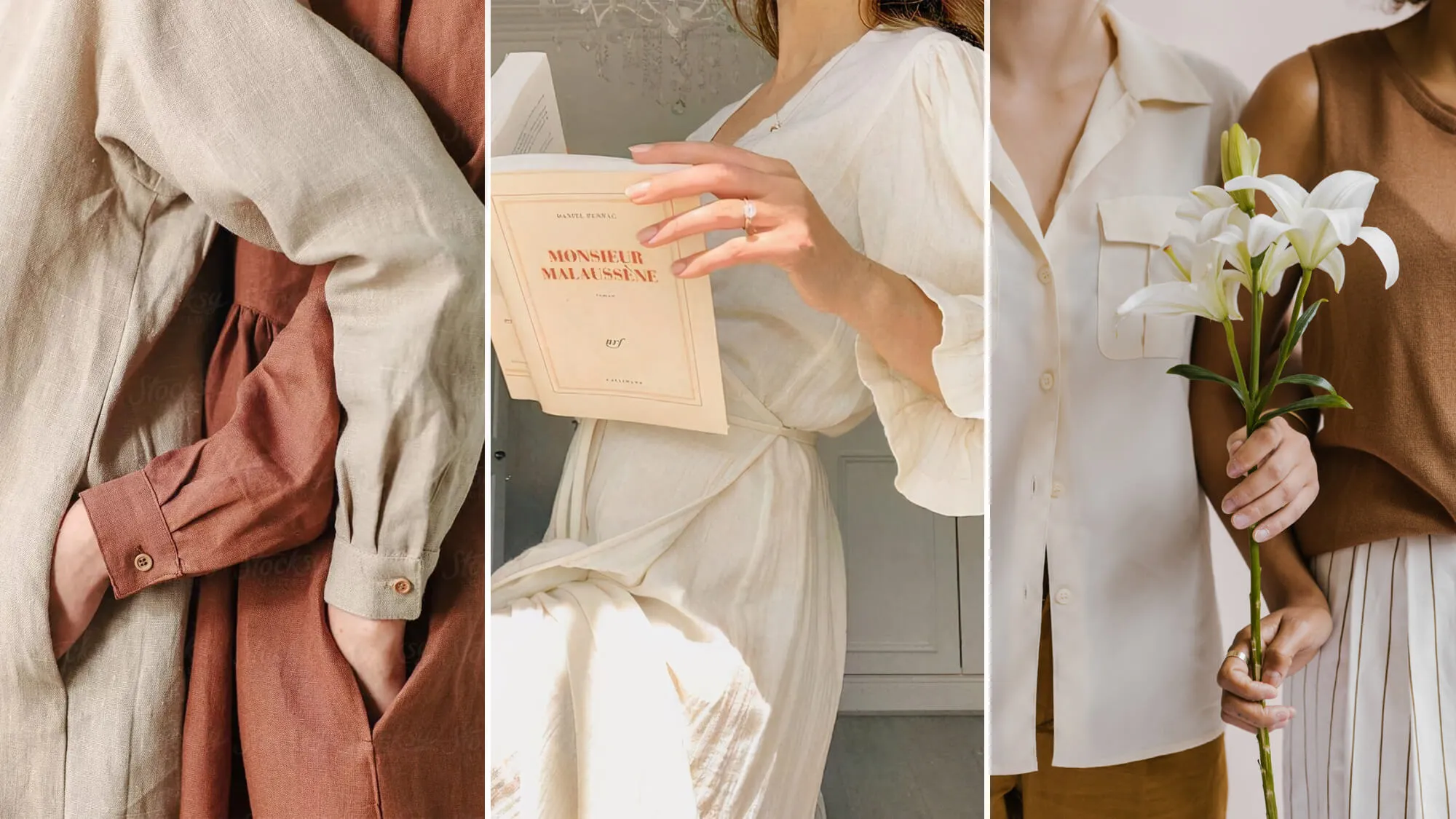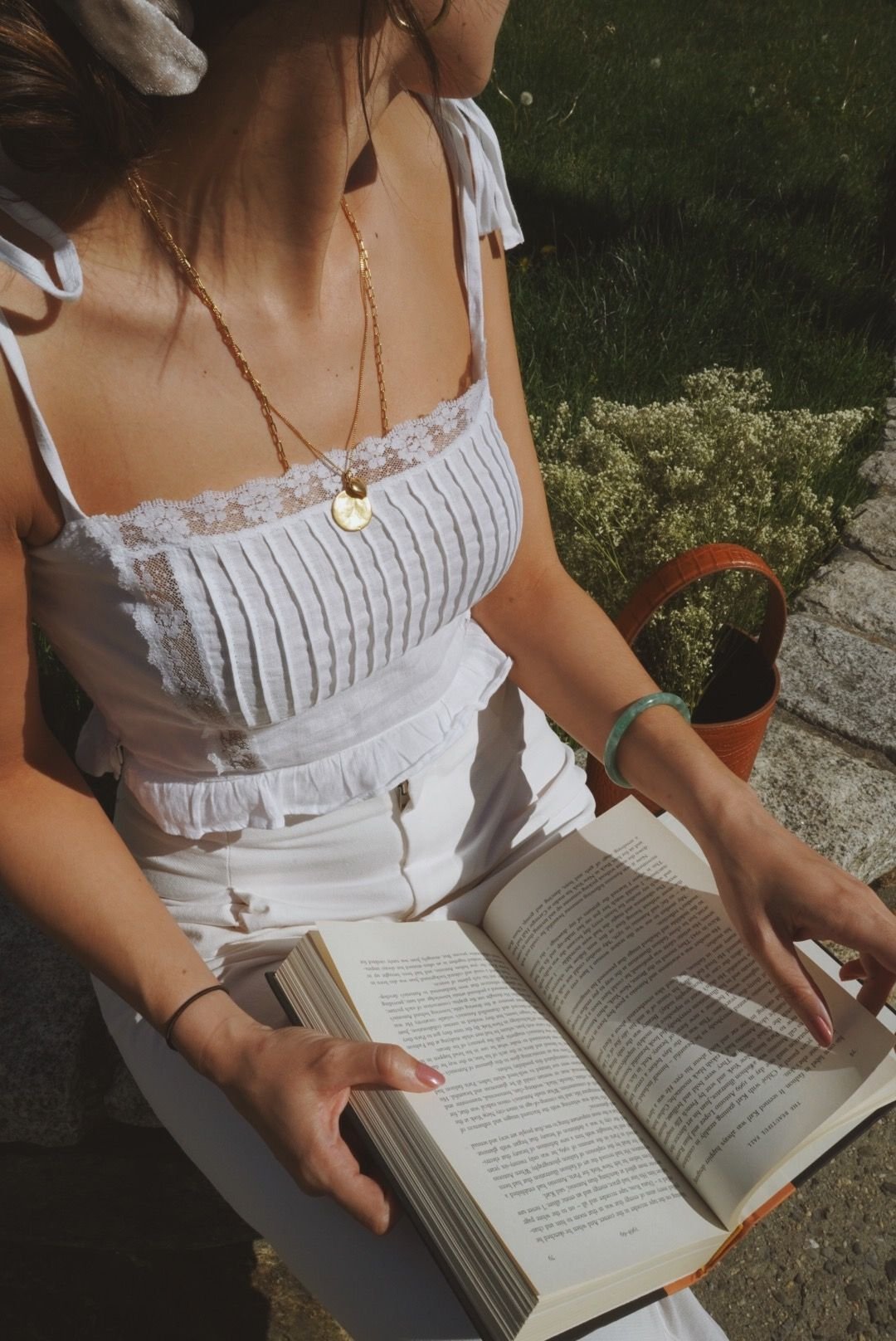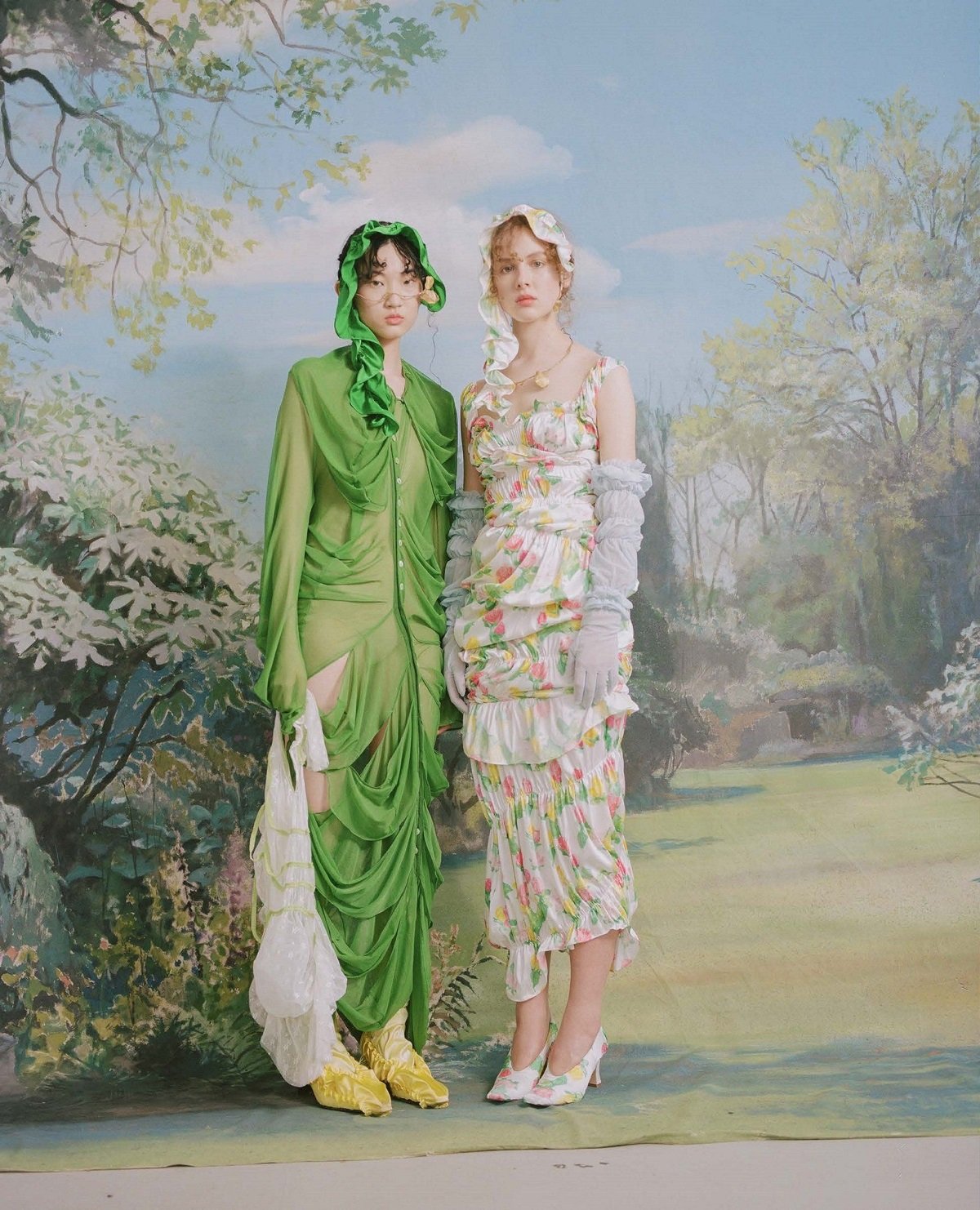Slow Fashion – Dressing “Slow” for Beauty and Comfort
Is slow fashion a challenging and short-lived trend? This article will guide you on how to embrace “slow” fashion in a simple and stylish way.

Things you should know about slow fashion before incorporating them into your wardrobe | Source: Pinterest
Amid the myriad environmental and ethical concerns raised by fast fashion, slow fashion is gradually gaining attention and making its way into consumers’ lives.
Beyond being a mere trend, slow fashion aims for sustainability to create positive and long-lasting impacts on both individual lifestyles and the entire fashion industry.
While slow fashion is widely mentioned, do you know how to apply it to your life? Sometimes, the best way to help the world is to truly understand the meaning behind trending phrases.
Understanding “Slow” Appropriately
Slow fashion involves the production and purchase of items with long-lasting utility and environmental friendliness. Many people often confuse “sustainable fashion” with “slow fashion.” However, according to Claudia Manley, the author of the book “Fashion Writing: A Primer,” sustainable fashion is part of slow fashion.
While sustainable fashion focuses on protecting the environment and labor costs in production, slow fashion revolves around the quality of whether a garment is durable or not.

Slow fashion emphasizes the durability of materials | Source: Ecowiki
An article in British Vogue in 2020 argued that slow fashion is a slow-paced shift, resisting the current loud trends in the fashion world. Conscious of the harmful effects of fast fashion, environmentally friendly materials with durability features have emerged and are widely used, such as clean cotton, fabric made from banana leaves, stone paper, mushroom leather, Tencel fabric, linen, or linen. Products are produced in small batches by local designers or artisans.
Slow fashion does not just emerge as a faint voice and then disappear. It is more than a fashion trend; it cares about longevity and good values for the environment and humanity. Looking beyond, slow fashion demands a change in lifestyle. It requires conscious choices from the moment we wake up until we go to sleep.
Is Slow Fashion Ready to Dethrone Fast Fashion?
In the pervasive realm of fast fashion, where trends come and go at lightning speed, slow fashion often seems like a timid whisper. However, the emergence of slow fashion isn’t about a power struggle or competition with its swift counterpart.
It serves as a reflection of how humans adapt to economic fluctuations, environmental pollution, and changing lifestyles through the lens of fashion. Slow fashion advocates for a thoughtful approach to personal finance, urging consumers to choose their wardrobes wisely, opting for items with enduring value rather than fleeting trendiness.
Unlike fast fashion’s focus on current trends, resulting in the swift disposal of garments after a short period of use, slow fashion opens the door to the development of local fashion. It encourages domestic brands to harness available resources, seek unique local values, and integrate them into their designs.

Slow fashion helps domestic brands with limited financial resources to have opportunities for development | Source: Thefemin
Shopping at local brands not only provides consumers with insights into the origins of their clothing and materials but also inspires a greener and more sustainable lifestyle. This fosters a novel fashion experience, appealing particularly to the younger generation seeking a deeper connection with their purchases.
The fast fashion cycle tends to force consumers into molds shaped by social media influencers, eroding the uniqueness and authenticity of personal style. Slow fashion, on the other hand, empowers consumers to shape their individual styles meticulously, choosing their wardrobes with care.
It enables fashion enthusiasts to assert control over what they wear, establishing a rhythm for their personal style without succumbing to the fatigue induced by rapidly changing trends. Slow fashion becomes a journey of self-discovery, allowing individuals to embrace their uniqueness in a world dominated by fleeting fads.
Embracing “Slow” Fashion with Comfort
Some argue that slow fashion demands effort in seeking brands, caring about materials, and more. However, applying slow fashion is simpler than you think. To become a savvy consumer and embrace slow fashion effectively, you can start with the basics.
Don’t Hastily Fill Your Wardrobe with Slow Fashion
Start by organizing your wardrobe. This is an opportunity to “converse” with your clothes, selecting outfits that can be mixed and matched or parting ways with items you no longer wear. Define your values and fashion style before making shopping decisions to avoid impulsive buying and prevent future waste.
Pursuing slow fashion doesn’t mean rushing out to fill your wardrobe with newly bought sustainable clothing but maximizing the use of the pieces you already have. Instead of chasing prominent trends that result in rarely worn outfits, try adjusting and upcycling them, combining different clothing pieces to create new ensembles, or donating them to extend their life cycle.

Pursuing slow fashion doesn’t mean you need to completely overhaul your wardrobe | Source: Sohu
Learn to Prolong the Lifespan of Your Clothing
Many people buy new clothes simply because they don’t know how to care for them properly, leading to quick wear and tear. To keep your clothes wearable for longer, take proper care of your wardrobe.
Choose appropriate colors and fabric materials when cooking or eating to avoid stains, especially with bright-colored or delicate fabrics like silk and linen. Place delicate fabrics in mesh bags for protection during machine washing, and follow care instructions on labels to avoid damaging the material.
Avoid exposing clothes to high temperatures by air-drying naturally (you can turn clothes inside out to prevent direct sunlight exposure) instead of using a dryer.
Slow Fashion Doesn’t Mean Boring Attire:
Pursuing slow fashion doesn’t equate to outdated or dull clothing. Fashion designer Stella McCartney emphasizes, “I don’t think things have to be ugly just because they’re sustainable. Why can’t they be beautiful? I don’t think we should be saying, ‘Well, this isn’t very good-looking because it’s eco-friendly, and don’t buy that gorgeous dress because it’s not sustainable.’

A beautiful design is not necessarily associated with fast or slow fashion | Source: Yunhanwang
Currently, worldwide and in Vietnam, numerous brands are associated with sustainability. Recognizing the importance of environmental protection, brands are adapting to change. Sustainable products maintain unique aesthetics, meeting the criteria of beauty and individuality for consumers.
Ultimately, slow fashion is a human response to life and societal issues. While there is growing support for slow fashion, there’s still a long way to reshape the fashion industry’s operations. By supporting sophisticated fashion brands, simplifying wardrobes, and adopting various practices, we can bring individual fashion styles back to a more moderate pace.
Gradually, as individuals realize they can take a leisurely approach to their wardrobes, fashion brands won’t be able to force them to chase fleeting trends.


